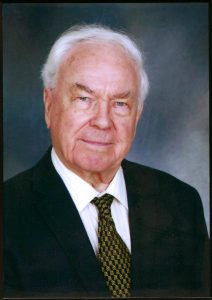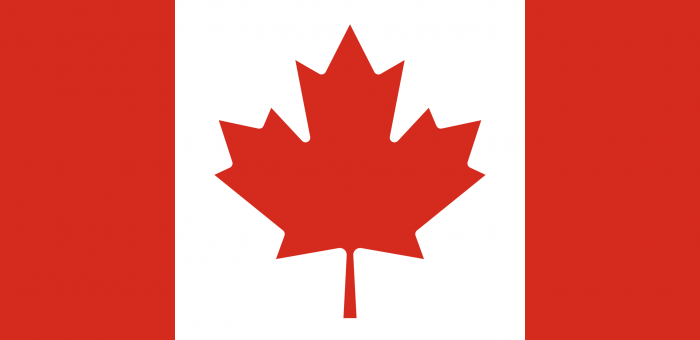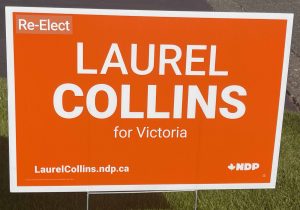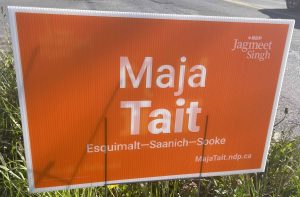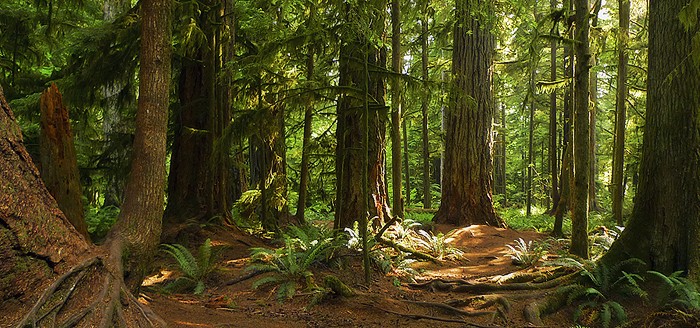The Monty Hall Problem
This post was written by my father, John Weaver, and originally published on September 29, 2015 on his blog: beorminga.wordpress.com. I am preserving them on my website as his blog posts are remarkable in their thoroughness and depth of research. Enjoy!
The Monty Hall Problem
I had occasionally seen the TV programme ‘Let’s Make a Deal’ hosted by Monty Hall, but it wasn’t until I read The Curious Incident of the Dog in the Night-time, an acclaimed novel by Mark Haddon (2003), that I realized the TV show had sparked an interesting and controversial question in probability. The main character who narrates the story in the book is a boy with Asperger’s syndrome and an unusual talent for mathematics. Among his varied and unconventional musings he describes the Monty Hall problem in which a contestant was asked to choose one of three doors in the hope of winning a car which was hidden behind one of them. After the contestant had picked a particular door Monty Hall would open one of the two other doors revealing a goat. He then asked the contestant if he wanted to switch to the other unopened door or stick with his original choice. The boy gives two proofs, one based on probability theory and the other on a flow-chart depicting all the possible outcomes, to show that the contestant should always switch because the probability that the car is behind the other unopened door is 2/3. What surprised me, however, were the boy’s quotations of actual remarks made by PhD mathematicians claiming the solution to be wrong! It is understandable that a first intuitive reaction would suggest that a contestant faced with only two closed doors, one of them concealing a car, had a 50% chance of winning whether he switched or not. But in fact the Monty Hall problem is an example of Bayesian theory where posterior probabilities affected by new evidence can sometimes yield counter-intuitive results that have, apparently, confused even professional mathematicians on occasions.
Further investigation led me to an interesting blog by Allen Downey where this problem and others involving Bayes’ theorem are discussed. Downey also refers to the Wikipedia article on the Monty Hall problem which explores in great detail many variants of the basic problem. I find it remarkable that the strategy for winning a car in a simple TV game-show has given rise to such profound investigations in probability theory.
There are no new results in the following article. I have simply developed well-known solutions in my own words in order to clarify my understanding of the theory.
The Monty Hall Problem
There are three doors. Behind one of them is a car. Behind the other two are goats. The contestant is asked to pick a door, which he does. The host then opens one of the other doors behind which there is a goat, after which he asks the contestant if he wishes to switch his pick to the other unopened door or stay with his original choice. What should the contestant do?
Part 1
Let the doors be labelled A, B and C, and let the corresponding events that the car is behind these doors be A , B and C respectively. Denote the probability that the car is behind door A by P(A) etc. and suppose the contestant chooses door A and the host opens door B to reveal a goat. Clearly 𝑃(𝐴) = 1/3. Hence we may infer that P(Ã) = 1 − 𝑃(𝐴) = 2/3 where à is the event ‘not A’ (the car is not behind door A). Thus, since the events A, Band C are mutually exclusive (the car can be behind only one door), we have
2/3 = 𝑃(Ã) = 𝑃(𝐵 ∪ 𝐶) = 𝑃(𝐵) + 𝑃(𝐶).
When the host opens door B to show there is no car there, the contestant knows that 𝑃(𝐵) = 0. Hence from the equation above 𝑃(𝐶) = 2/3.
Thus we have P(A) = 1/3 and P(C) = 2/3 showing that the contestant should always switch his choice to the other unopened door.
Alternatively this result can be reached through Bayes’ Theorem, an approach that also prepares us for the more detailed investigation in Part 2. Let 𝐸 denote the event of the host opening door B to reveal a goat. Then 𝑃(𝐸|𝐴) is the probability of him doing this knowing that the car is hidden behind door A. Likewise, 𝑃(𝐸|𝐵) and 𝑃(𝐸|𝐶) are respectively the probabilities of the host opening door B when the car is behind doors B and C respectively. It is obvious that 𝑃(𝐸|𝐵) = 0 (the car is there, not a goat!) and 𝑃(𝐸|𝐶) = 1 since he must open door B in this case (he cannot open C because the car is there, and door A, the contestant’s choice, always remains closed of course). When the car is behind door A the host can randomly choose either door B or C as the one to open. Thus 𝑃(𝐸|𝐴) = 1/2. Bayes’ Theorem states that
𝑃(𝐴|𝐸) = 𝑃(𝐸|𝐴)𝑃(𝐴) / 𝑃(𝐸)
= 𝑃(𝐸|𝐴)𝑃(𝐴) / [𝑃(𝐸|𝐴)𝑃(𝐴) + 𝑃(𝐸|𝐵)𝑃(𝐵) + 𝑃(𝐸|𝐶)𝑃(𝐶)].
The denominator follows because, as stated earlier, the events A, B and C are mutually exclusive. Substituting the values we obtained above, we obtain
𝑃(𝐴|𝐸) = (1/2 · 1/3) / [1/2 · 1/3 + 0 · 1/3 + 1 · 1/3] = 1/6 / 1/2 = 1/3.
Similarly
𝑃(𝐶|𝐸) = 𝑃(𝐸|𝐶)𝑃(𝐶) / 𝑃(𝐸) = (1 · 1/3) / 1/2 = 2/3.
Either one of these results infers the other, of course, since 𝑃(𝐴 ∪ 𝐶) = 1.
Part 2
Part 1 describes the simple approach to the problem in which no account has been taken of the host’s strategy in opening the doors. Obviously if the car should be behind the door A chosen by the contestant, then the host could open either door B or door C, but if it were behind door C then he can only open door B. The point is that the host’s role in selecting which door to open has not been used in the solution so far.
The host may have a habit of preferentially opening door B, rather than door C, when the car is behind A, say 75% of the time. But if he randomly chooses between doors B and C then the probability that he opens door B is 50%. In general we can say 𝑃(𝐸|𝐴) = 𝑝 where 𝑝 varies from 0 to 1. When 𝑝 = 0 the host never opens door B to reveal a goat, presumably because he knows the organisers of the game always place the car behind door B. At the other extreme 𝑝 = 1 he always opens B in the knowledge that the car is never placed behind that door.
Using Bayes’ Theorem again and following exactly the same arguments given in Part 1, we deduce
𝑃(𝐴|𝐸) = 𝑝 · 1/3 / [𝑝 · 1/3 + 0 · 1/3 + 1 · 1/3] = 𝑝/( 𝑝 + 1).
Suppose first that 𝑝 = 1/2, i.e. that the host randomly selects door B as the one to open. Then 𝑃(𝐴|𝐸) = 1/3 which is the result obtained in Part 1. If door B is opened by the host 75% of the time, then 𝑃(𝐴|𝐸) = 75/175 = 3/7 implying that the contestant should still switch his choice to door C where the probability of winning the car is 4/7 compared with 3/7 if he sticks with his original selection of door A. When 𝑝 = 0 it is certain that the host will not open door B and is therefore forced to open door C. Moreover 𝑃(𝐴|𝐸) = 0 in this case, so the contestant will definitely win by switching to the unopened door, namely B. Finally, if 𝑝 = 1 the host must open B leaving the possibility that the car is behind either A or C, and indeed 𝑃(𝐴|𝐸) = 1/2 when 𝑝 = 1.
In general we have 0 ≤ 𝑃(𝐴|𝐸) ≤ 1/2 over the range of values 0 ≤ 𝑝 ≤ 1 so that it always pays the contestant to switch to the unopened door (except for 𝑝 = 1 when there is no advantage gained or lost by switching).
John Trevor Weaver (November 5, 1932 – April 26, 2025)
Obituary
John Weaver passed away peacefully at the age of 92 on Saturday, April 26th, 2025, at the Royal Jubilee Hospital surrounded by his loving family.
He is survived by Ludmilla, his wife of 65 years; his children Andrew (Jordan), Anthony (Laurence) and Alexandra (Dan); grandchildren Maria, David, Hélène, Paul, Nicolas, Nicholas, Charlotte and Georgia. He is also deeply mourned by his sister Margaret, and his extended family and friends in Canada and abroad.
John was born on 5th November 1932, in Birmingham, UK where he spent his childhood and attended Solihull Grammar School. In 1950 he enrolled at Bristol University and earned an Honours degree in Mathematics. He also joined the University Training Corps, and in 1953 was selected as one of two representatives from Bristol University to march in the coronation procession of Queen Elizabeth II. That same year, John boarded the Empress of France in Liverpool and set sail for Montreal on his way to the University of Saskatchewan where he completed both his MSc and PhD in Physics. It was there that he met his future wife Ludmilla at the International Students’ Club. They married in 1960.
After honeymooning in the UK and continental Europe they moved to Victoria where John worked as a research scientist at the Pacific Naval Laboratory in Esquimalt. In 1966 he accepted a faculty position at the University of Victoria and later served as Chair of the Physics and Astronomy Department. John then became the first Dean of UVic’s newly formed Faculty of Science and held this position until his retirement in 1998.
John will be remembered as a true gentleman, devoted husband, father, grandfather, and patriarch. He was kind and highly respected by a large circle of extended family, friends, and colleagues around the world. His strength of character, empathy, kindness, erudition, humour, and unwavering devotion to his family will be sorely missed.
Special thanks to the staff at Royal Jubilee Hospital, especially nurses Rowena, Nathan, Jeremy, Gabriella and Kat for their compassionate and professional attention to his needs. Special thanks also to the staff at Amica Somerset House, especially Jodie and Joy.
A funeral will be held at Christ Church Cathedral in Victoria, BC, on Monday, 5th May, at 1 pm (PST).
Funeral service
Eulogy
 When John, Dad, Grandpa or Gramps as David and I know him, was diagnosed with terminal cancer in February, he decided to prepare his own eulogy. As he told his daughter Alexandra, “I want to make sure the dates of the events in my life are mentioned correctly”. This was a perfect example of John’s meticulous attention to detail – a trait we deeply admired, even if it could be a bit frustrating when he corrected our grammar mid-sentence.
When John, Dad, Grandpa or Gramps as David and I know him, was diagnosed with terminal cancer in February, he decided to prepare his own eulogy. As he told his daughter Alexandra, “I want to make sure the dates of the events in my life are mentioned correctly”. This was a perfect example of John’s meticulous attention to detail – a trait we deeply admired, even if it could be a bit frustrating when he corrected our grammar mid-sentence.
He also said that he wanted a eulogy that traced his journey in life, believing that would be more interesting than an “exaggerated account of how wonderful he was”. Sadly, John passed away before he was able to finish it. On the positive side, it leaves us room to finish his story in our words….
John Weaver was born on 5 November, 1932 in Birmingham, UK and grew up in nearby Solihull. The area was a major target for the Luftwaffe in World War 2 and John spent many nights in an air raid shelter in the back garden. In a field opposite the house was a searchlight and an anti-aircraft gun, down the road a barrage balloon and right outside the house a smokescreen incinerator which emitted oily, black smoke to obscure enemy targets on the ground. It is not surprising therefore that several houses on Solihull Road were bombed, but not his fortunately.
John won a place at Solihull School, an independent ‘public’ school which took scholarship boys. After the war, John’s father (who had been employed on war work at the nearby Rover company) obtained a new position as a sales representative for a Birmingham company making hotel bar equipment and was transferred to Bristol. Since John was approaching the all-important School Certificate examination, he stayed on in Solihull, living with his grandparents, while the rest of the family, mother, father and his younger sister Margaret moved to Bristol. This was a decision he later came to regret. On the positive side, one of his school friends invited him to join his family on a holiday in Switzerland. This was a transformative life experience for John who up to this point had been the consummate parochial Englishman, having rarely travelled beyond his local comfort zone, only once to London and never abroad. He was immediately fascinated by the variety of cultures, languages, ways of life, tastier food and superior infrastructure on the continent. He became an instant Europhile, and the experience inspired a love of travel and adventure which lasted throughout his life. Later in life this led him to travel extensively all across the world with Ludmilla and family.
In 1950 he reunited with the family when he enrolled at Bristol University to study for an Honours degree in Mathematics. In the summer vacations he returned to the continent, hitch-hiking around France and Switzerland with friends and working in an aluminium factory in Norway. He also joined the University Training Corps, and in 1953 was selected as one of two representatives from Bristol University to march in the coronation procession of Queen Elizabeth 2nd.
By chance, a distant relative who had married a Professor of History at the University of Saskatchewan, visited the family while on a tour of the UK. She suggested John experience life at a Canadian university by taking a Master’s degree at the University of Saskatchewan. John took this suggestion with a pinch of salt but was very surprised when several weeks later a letter arrived from the Head of the Physics Department inviting him to apply for graduate work with the promise of financial support. The relative had followed through after all but with a slight error — she got the wrong department, Physics rather than Mathematics! But with his recently acquired sense of adventure John thought “Why not?”. In September 1953, much to his sister’s dismay that he was once again leaving the family, John handed in his Ration Book as he boarded the ‘Empress of France’ in Liverpool and set sail for Montreal.
To say that his arrival in Saskatoon, a small town isolated in the middle of the prairies with their fierce winters and hot dry summers was a cultural shock, is an understatement. His home in England was a three-day train journey and a week-long sea voyage away; telephone calls to family were very expensive and had to be booked well in advance for a timed three-minute conversation. Nevertheless, John found the Saskatchewan people warm and friendly; he was tremendously impressed with the quality of the faculty and students in the Physics Department, and he soon made a wide circle of friends, many, like him, from Europe. As his MSc graduation approached, John was selected for an exchange scholarship to study at Göttingen University in Germany, which was another life-changing experience.
The exchange committed John to return to the University of Saskatchewan to continue his graduate studies. The next three years as he worked towards his PhD were a bit of a grind, but he enjoyed teaching some mathematics courses. His social life revolved around the International Students Club, the Saskatoon German Club and playing soccer. In the two clubs he met a ‘French’ girl — at least he thought she was French because she was speaking French and kept talking about growing up in France — but he soon discovered she was Ukrainian sent by her parents in Montreal to study at a Ukrainian Institute in Saskatoon.
John and Ludmilla were married in Montreal, 8th of May, 1960, nearly 65 years today. After a honeymoon in the UK and continental Europe they set off for Victoria where John had a position at the Pacific Naval Laboratory in Esquimalt.
And so John and Ludmilla left Saskatoon for good in May 1961 and started a new life in Victoria. They bought their first house in Esquimalt; Andrew was born in November 1961; Anthony in February 1965. Many years later their daughter Alexandra was born in 1976.
After five enjoyable and scientifically productive years at PNL, John realised that if he was ever to achieve his goal of eventually returning to his homeland, now was the time to act. One advertised post that seemed particularly attractive was for a mathematics lecturer at a polytechnic in England. The application forms were sent to him, however, by surface rather than air mail, arriving well after the closing date. He returned them anyway and received a very apologetic reply from the head of the department saying he would be notified if other positions became available. Meanwhile, with the University of Victoria expanding rapidly, John received an offer of a permanent position in the Physics Department. He delayed his response as long as possible but eventually, having heard nothing more from the polytechnic, he accepted the faculty position at UVic in 1966. Less than two weeks later, a letter from England did arrive inviting him to apply for one of four positions now available! John often mused how different his journey through life would have been had a wrong stamp not been put on the envelope when mailing the initial application form.
From the time John joined the University of Victoria to his passing, he devoted his research and passion to studying geophysics, in particular geomagnetism. John initially was appointed to the Department of Physics and Astronomy and later cross-appointed with the School of Earth and Ocean Sciences. His breadth of scientific interest, collegiality, and vision for expansion in the Science Faculty all led to his appointment first as Chair of Physics and Astronomy (1980-1988) and then as Dean of Science (1993-1998). As Dean, he not only helped foster growth and development of the new School of Earth and Ocean Sciences, the Centre for Earth and Ocean Research, the VENUS and NEPTUNE cabled ocean observatories, but also more broadly the Centre for Global Studies and instituted a Teaching Awards program. These developments succeeded in part because of his energy, devotion, fairness and openness as an academic administrator.
He remained active well into retirement as a Professor Emeritus and in supporting individuals for scholarships and prizes and mentoring further academic programs within the Faculty of Science. He was entirely unselfish, and became a dependable supporter for new initiatives in research and teaching such as the Canada Research Chairs Program. He was a consummate coach for the Faculty of Sciences and UVic, watching out to help new faculty members and in advancing new initiatives that have helped build UVic’s strong international reputation – elbows up, but always in a gentlemanly posture. Our family has been touched by how fondly John is remembered by his many friends and colleagues from his days at UVic.
John also had a keen interest in local affairs and was a frequent contributor to the Letters section of the Times Colonist. He was an active member of the Rockland Neighbourhood Association and a keen supporter of the Capital Region Municipal Amalgamation Society.
In editing this section of John’s eulogy, we were struck by John’s insistance on pointing out that the “University of Victoria” was an obvious misnomer because one end of the building he worked in was in Oak Bay and the other in Saanich. What a demonstration of John’s keen eye to detail!
In addition to his valuable professional and community contributions, anyone familiar with John would know that many of his greatest contributions were to the lives of his family and friends. John requested his eulogy to be purely factual and chronological, leaving pleasantries aside; however, we believe that pleasantries are not just appropriate, but factual when describing the impact he had on his loved ones. In a break from chronology, we would like to share some warm memories chosen by members of John’s family that highlight the ways he touched the lives of those around him.
His children and grandchildren remember fondly:
- the extraordinary scavenger hunts he would put on for his grandchildren
- His hand-drawn cards (John was a talented artist!)
- Helping every grandchild with math at some point in their life (“Grandpa school”)
- bed-time stories, some short and some unbelievably long and imaginative (Alice and Jane and the penny story)
- trips with his grandchildren, including destinations like Chemainus and a brave tour of England with his French grandchildren
- His culinary specialty – cut along the dotted line soup!
- Teaching his grandchildren to play chess and then later beating them almost every game (the family champion!)
- Buying his grandchildren shirley temples at the faculty club
- Going for walks with his tilly hat and dark sunglasses, even when it was mild and cloudy.
- John falling asleep at the cinema and the kids being embarrassed when he snored
- Endless games of Snakes and Ladders, Loup Garou (although nobody could quite figure out the purpose of this game…), and more.
- Taking his grandchildren to camps in the summer (like sports camps)
- And being loving and accepting of his family no matter what
In his latter years John spent his days visiting Ludmilla at Mt. St. Mary’s. Ludmilla had developed Alzheimers and needed full time care which John could no longer give. John developed a daily ritual, rain or shine, seven days a week of picking Ludmilla up from Mt. St. Mary’s to take her for a drive (or a Trishaw experience). He was always looking for what we lovingly termed “a destination”. Many days involved a walk with Ludmilla around Turkey Head or Clover Point (John would always point out how the picnic tables were never used!). Other days he would stop at Alexandra’s or their house in Rockland for tea. And sometimes it simply involved a soft ice cream cone at the Beacon Drive in. The staff at Mt. St. Mary’s frequently commented on John’s incredible dedication to his wife.
John lived a very full life and always took a genuine interest in the lives of others. In the later years of his life, in addition to all that was mentioned above, he spent his time:
- Attending Friday evenings at the Faculty Club with the “regular crew”.
- Spending time with family, his three children and many grandchildren (including treating them to their annual trip to the Deep Cove Chalet)
- Enjoying walks with the Cathedral Walking Group
- Hosting (expert level!) trivia for his neighbours at Amica Somerset even through his health struggles.
- Enjoying the finer treats in life, like nespressos, marmalade, and gin martinis!
- Researching his genealogical roots and putting together the family history with the help of his daughter-in-law, Laurence, for the benefit of his grandchildren
- And writing articles on a vast array of subjects, from mathematics to public policy, on his personal blog Beorminga.
Not long before his passing, John remarked on how much he loved his family and how proud he was of his children, Andrew, Anthony and Alexandra. On his last day, he was surrounded by family. All of his children and grandchildren were there with him in the room or connected via video call (from all around the world no less). He passed peacefully, holding my (Maria) and my father’s hands. John is loved and dearly missed.
A close family friend visited John during his final hours and shared some words on the end of life from her late husband. We’d like to end off by sharing an extract from a funeral address by the late Desmond Carroll that we think John would have appreciated.
“The end of life brings us to a threshold as we face that mysterious place where the known and the unknown intersect. We ponder, with all those emotions that seek to understand, what may be beyond. As we were sustained and comforted in our lives by love, there is a greater love that waits on the other side of the threshold that understands our humanity…
Electing Strong Island Voices for a Strong Canada
Sunday, March 9, 2025, Dürres, Albania:
Mark Carney was just elected to lead the Liberals into the forthcoming Canadian federal election. This election is turning out to be one of the most important in Canadian history.
In Russia, Valdimir Putin continues his expansionist dreams of rebuilding the Soviet Union through his latest campaign of terror, violence and war crimes now aimed at the Ukrainian people. Meanwhile, in the middle east, Gaza lays in ruins, the Syrian government has been overthrown, and tensions continue between the Israeli government and the Iran-supported terror organizations Hamas, Hizballah, and the Houthis. In Europe, Germany’s far right Alternative for Germany (AfG) party made stunning gains in the 2025 election. Virtually every region of the country that was once under East German communist rule supported the anti-immigration AfD campaign. Meanwhile many parts of Africa and Asia continue to experience civil unrest.
Historically, the world would have turned to America and its NATO allies to broker peace and maintain world order. But all that has changed with the election of Donald Trump. He is waging trade wars against allied nations thereby undermining international trade and security agreements. He insults international leaders on an almost daily basis. Whether it be calling Prime Minister Justin Trudeau the Governor of the great state of Canada or acting like a school yard bully to publicly demean Ukrainian president Volodymyr Zelenskyy, the man has no limit.
The chaos created by Donald Trump has caused the Dow Jones Industrial Average to tumble recently, completing a classic double-top trading pattern suggesting a major market correction is in the cards. His delusional dreams of rebuilding Gaza into a Mediterranean paradise, or annexing Greenland and Canada are all signs of a very disturbed man. Donald Trump is making America weak again.
 Donald Trump’s niece Mary Trump holds a PhD in clinical psychology from Adelphi University’s Derner Institute of Advanced Psychological Studies, the first university-based professional school of psychology in America. As a clinical psychologist and daughter of Donald Trump’s older brother Fred, she is uniquely qualified to comment on the president’s psychiatric condition. She didn’t hold back in her tell-all book Too Much and Never Enough: How My Family Created The World’s Most Dangerous Man.
Donald Trump’s niece Mary Trump holds a PhD in clinical psychology from Adelphi University’s Derner Institute of Advanced Psychological Studies, the first university-based professional school of psychology in America. As a clinical psychologist and daughter of Donald Trump’s older brother Fred, she is uniquely qualified to comment on the president’s psychiatric condition. She didn’t hold back in her tell-all book Too Much and Never Enough: How My Family Created The World’s Most Dangerous Man.
There she writes that he displays all nine characteristics of narcissistic personality disorder as detailed in the American Psychiatric Society’s Diagnostic and Statistical Manual of Mental Disorders. She further suggests that he may suffer from dependent personality disorder, antisocial personality disorder and “long undiagnosed learning disability that for decades has interfered with his ability to process information.” Perhaps this explains his behaviour, admiration of authoritarian demagogues and chaotic approach to governance.
But at the same time, it’s easy to manipulate such an individual by simply playing to their unabated, all-consuming egotism. And so, Trump has surrounded himself with sycophants, the brightest of whom know how to influence him to get exactly what they want.
For much of the spring term, I’ve been on sabbatical in Albania. It’s been a life changing experience as I’ve got to know the people and the country. Albania is a new democracy and much of the country has been rebuilt this century. Memories of persecution and terror under the communist dictatorship that ended in 1991 as well as the 1997 civil war are still fresh in people’s minds. Life is hard for many.
 Albania still has a few governance and infrastructure wrinkles to iron out prior its planned 2030 entry into the European Union. But the spring in the gait of the hardworking people, the joyous interactions I had with so many, and the generosity of those who had so little to give affected me deeply. It’s a society where people look out for one another.
Albania still has a few governance and infrastructure wrinkles to iron out prior its planned 2030 entry into the European Union. But the spring in the gait of the hardworking people, the joyous interactions I had with so many, and the generosity of those who had so little to give affected me deeply. It’s a society where people look out for one another.
While officially a secular state, more than half of Albanians are Muslim. The Muslim majority live in harmony with the Orthodox and Catholic minorities. Like France, Albania only recognizes civil unions and so its not uncommon to see muslims marry christians or orthodox wed catholics.
Yet while Albanians celebrate their freedom and newly found democracy, America is heading in the opposite direction. Even here in British Columbia, the BC NDP’s introduction of Bill 7 — Economic Stabilization (Tariff Response) Act signalled a disturbing trend towards more autocratic governance. Vancouver columnist Vaughn Palmer writes “In 41 years of covering B.C. governments, I’ve not seen a legislation as arbitrary and far-reaching this side of the federal War Measures Act.”
Since the inauguration of Trump, Canadian sovereignty has come under attack. Watching this from afar was very difficult. It’s critical that Canada has stabled principled leadership in these difficult times. And Mark Carney is exactly the type of person Canada needs. The Conservative Party appears to have been taken over by extreme elements whose behaviour mirrors that of the Republican Party south of the border. Those identifying with the progressive conservative roots of the Conservative Party have been left feeling alienated; the NDP do not have the leadership required to take on Donald Trump, and the Canadian Greens are disorganized and mired with never-ending infighting.

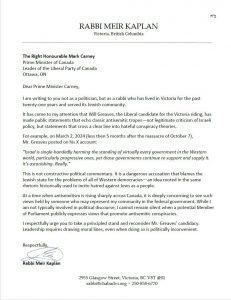 But here’s the dilemma. On Vancouver Island we are not voting for Carney. We are voting for the Member of Parliament that we believe will best represent us in Ottawa. In my view, the Liberals have yet again overlooked the island thereby stoking our underlying sense of western alienation. None of their south island candidates inspire me to want to vote for them as I do not believe they will be strong advocates for our region. The Liberal south island candidates recently moved here from somewhere else in Canada. Two of their rookie candidates are already mired in scandal. In the case of Will Greaves, an unfortunate twitter post from March 2024 led Rabbi Meir Kaplan to write to Prime Minister Carney asking him to reconsider Mr. Greaves’ candidacy for his “public statements that echo classic antisemitic tropes”.
But here’s the dilemma. On Vancouver Island we are not voting for Carney. We are voting for the Member of Parliament that we believe will best represent us in Ottawa. In my view, the Liberals have yet again overlooked the island thereby stoking our underlying sense of western alienation. None of their south island candidates inspire me to want to vote for them as I do not believe they will be strong advocates for our region. The Liberal south island candidates recently moved here from somewhere else in Canada. Two of their rookie candidates are already mired in scandal. In the case of Will Greaves, an unfortunate twitter post from March 2024 led Rabbi Meir Kaplan to write to Prime Minister Carney asking him to reconsider Mr. Greaves’ candidacy for his “public statements that echo classic antisemitic tropes”.
Esquimalt-Saanich-Sooke Liberal candidate Stephanie McLean, on the other hand, who resigned from the Alberta legislature before completing her first term, has been called out by her own NDP colleagues for her musings about the ability of MLAs to advocate inside government caucus. I was surprised that the Liberals would think that a controversial former NDP MLA from Alberta would make a good candidate to run against Maja Tait, the present Mayor of Sooke, who I approached to run with the BC Greens in the 2017 provincial election. Maja has deep roots in the community and has has an exemplary record of public service in Sooke.
Friday, April 18, 2025, Victoria, British Columbia:
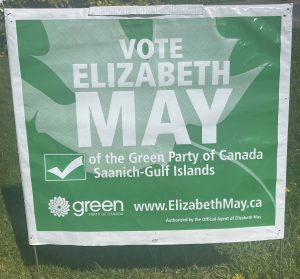 Today I waited in line for over two hours to cast my vote for Elizabeth May in the riding of Saanich Gulf Islands. While it would have been easy for me to vote for Saanich Councillor and NDP candidate Colin Plant, who I have known for quite some time and who I believe exemplifies stellar leadership in governance, I was concerned that without Elizabeth in Ottawa, critical environmental issues will be swept under the rug during parliamentary debates.
Today I waited in line for over two hours to cast my vote for Elizabeth May in the riding of Saanich Gulf Islands. While it would have been easy for me to vote for Saanich Councillor and NDP candidate Colin Plant, who I have known for quite some time and who I believe exemplifies stellar leadership in governance, I was concerned that without Elizabeth in Ottawa, critical environmental issues will be swept under the rug during parliamentary debates.
Like many of you, I have heard the NDP ads on the radio or seen the signs stating that we vote NDP to stop the conservatives on Vancouver Island. I agree in principle, with two notable exceptions. The candidates I list below I have either worked with or know quite well. Were I to reside in their ridings, I would vote for them knowing that they would advocate for Vancouver Island interests in Ottawa.
And finally, I am a huge fan of minority governments and I do not trust the Federal Liberals to be given free range with a majority government. While I desperately want Mark Carney to be our Prime Minister, I think it would be prudent for Canadians to ensure that NDP, Green and perhaps Bloc incumbents are elected to keep them honest. The leader of the Federal Liberals may have changed, but I remain unconvinced that the party insiders and staffers have taken heed of the message that they were sent by Canadians.
Let’s not split the vote on Vancouver Island and instead consider supporting the following candidates to ensure Mark Carney and the Federal Liberals have a minority government where our voices are heard!
These are the candidates I believe will best represent us on Vancouver Island:
1) Laurel Collins – NDP – Victoria
2) Gord Johns – NDP – Courtenay-Alberni
3) Alistair MacGregor – NDP -Cowichan-Malahat-Sooke
4) Paul Manly Green – Nanaimo-Ladysmith
5) Elizabeth May – Green – Saanich- Gulf Islands
6) Maja Tait – NDP – Esquimalt-Sooke-Saanich
The Paris Agreement is in trouble: UNFCCC needs to ratchet up their climate efforts
Earlier this week I had an article published in The Conversation. As Facebook appears to be blocking reposting of Canadian news articles, I have reproduced a version of it below. This version includes more information and a video produced by, and reproduced with the permission of Myles Allen.
Expanded Version of The Conversation article
Negotiations at the 29th Conference of Parties (COP29) to the United Nations Framework Convention on Climate Change (UNFCCC) are entering their second week after things got off to a rocky start.
Even before the event started, many were stunned that COP29 would again be hosted by a petro state. Just last year, COP28 was held in Dubai, United Arab Emirates, and this year it is Azerbaijan’s turn. Approximately 90 per cent of Azerbaijan’s exports are in the oil and gas sector.
The president of Azerbaijan, Ilham Aliyev, has described oil and gas resources as a “gift of god.” Meanwhile, the country’s deputy energy minister (and chief executive of COP29) has been caught on tape using the conference to advance oil investment deals.
What is the UNFCCC
The UNFCCC was established in 1992 and open for signature at the famous Earth Summit at United Nations Conference on Environment and Development held in Rio de Janeiro from June 3 to 14, 1992, where Canada signed. In total, 198 countries are now parties to the UNFCCC, which formally came into force March 21, 1994. Its main objective is:
“stabilization of greenhouse gas concentrations in the atmosphere at a level that would prevent dangerous anthropogenic interference with the climate system.”
To address this objective, parties to the UNFCCC adopted a legally binding international treaty, known at the Paris Agreement, at COP21 in Paris. The overarching goal of the Paris Agreement is:
“Holding the increase in the global average temperature to well below 2°C above pre-industrial levels and pursuing efforts to limit the temperature increase to 1.5°C above pre-industrial levels, recognizing that this would significantly reduce the risks and impacts of climate change”.
How successful have international negotiations been?
Since the establishment of the UNFCCC, the globally-averaged atmospheric carbon dioxide concentration has increased 18% (from 356 to 421 ppm) and the globally-averaged methane concentration has increased 11% (from 1735 to 1922 ppb). During this time the 5-year average rate of carbon dioxide increase has almost doubled from 1.3 ppm/years in 1992 to 2.5 ppm/year in 2023.
 Over the period 1992-2023 the global mean temperature has risen 0.9°C, now sitting at 1.18°C above the 20th century average and rising at 0.23 °C/decade. And when all anthropogenic greenhouse gases are converted to their carbon dioxide equivalent, the atmospheric concentration is 534 ppm CO2e approaching twice the preindustrial value.
Over the period 1992-2023 the global mean temperature has risen 0.9°C, now sitting at 1.18°C above the 20th century average and rising at 0.23 °C/decade. And when all anthropogenic greenhouse gases are converted to their carbon dioxide equivalent, the atmospheric concentration is 534 ppm CO2e approaching twice the preindustrial value.
At the same time, and despite more than three decades of negotiations, 2023 was 1.48°C warmer than the 1850-1900 preindustrial average and its looking like 2024 will be even warmer, almost certainly surpassing the 1.5°C mark for the first time.
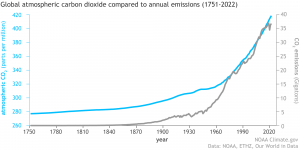 International negotiations have clearly failed to decrease anthropogenic greenhouse gas emissions or stabilize global mean temperatures.
International negotiations have clearly failed to decrease anthropogenic greenhouse gas emissions or stabilize global mean temperatures.
Neverthelss. the UAE Consensus, a landmark achievement of last year’s COP28, committed the parties to “transitioning away from all fossil fuels in energy systems, in a just, orderly and equitable manner in this critical decade to enable the world to reach net-zero emissions by 2050, in keeping with the science.”
This, however, begs an important question. Just what exactly does it mean to reach net-zero emissions “in keeping with the science?” I was a co-author in a recently published landmark study that may just help provide the answer.
What is net zero?
Defining net zero requires an understanding of timescales. Millions of years ago, trees, ferns and other plants were abundant when the atmosphere had much higher concentrations of carbon dioxide (CO2).
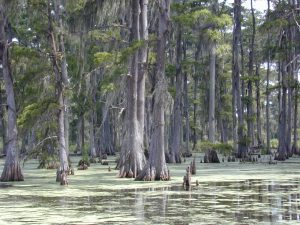 As the years went by, plants would grow and die. This dead vegetation would fall into swampy waters and, in time, turn into peat. Over millions of years, the peat turned into brown coal, then soft coal, and finally hard coal.
As the years went by, plants would grow and die. This dead vegetation would fall into swampy waters and, in time, turn into peat. Over millions of years, the peat turned into brown coal, then soft coal, and finally hard coal.
A similar process occurred within shallow seas where ocean plants (such as phytoplankton) and marine creatures would die and sink to the bottom to be buried in the sediments below.
Over millions of years, the sediments hardened to produce sedimentary rocks, and the resulting high pressures and temperatures caused the organic matter to transform slowly into oil or natural gas. The great oil and natural gas reserves of today formed in these ancient sedimentary basins.
Today, when we burn a fossil fuel, we are harvesting the sun’s energy stored in a life that lived millions of years ago. In burning fossil fuels, we release the carbon dioxide that had been drawn out of that ancient atmosphere — the same ancient atmosphere that had much higher levels of carbon dioxide than today.
Simply put, unless we can figure out a way to speed up the millions of years of geologic process, the idea that we can stop global warming solely through nature-based solutions or “planting a tree” simply isn’t realistic.
Reaching true net zero?
A series of scientific analyses published in 2007, February 2008, August 2008 and 2009 demonstrated that the stabilization of global mean temperatures required net-zero emissions. Policymakers interpreted these findings as a green light to emit carbon as long as these were natural “offsets.” This is a gross misinterpretation of the facts of net zero.
And so I, alongside a global team of 25 scholars and scientists involved in the early research, teamed up to correct this misinterpretation and explain just what exactly is (and is not) net zero.
Our research, recently published in Nature, makes four key recommendations for reaching true net zero:
- Stabilization of the global mean temperature at any level requires net-zero anthropogenic emissions;
- Reliance on “natural carbon sinks” like forests and oceans to offset ongoing carbon dioxide (CO2) emissions from fossil fuel use will not actually stop global warming;
- “Net zero” must be interpreted as “geological net zero” wherein each ton of carbon dioxide emissions released to the atmosphere through fossil fuel combustion is balanced by a ton of atmospheric carbon dioxide sequestered in geological storage;
- Governments and corporations are increasingly seeking carbon offset credit for the preservation of natural carbon sinks. Protection of natural sinks cannot be used to offset ongoing fossil fuel emissions if net zero is to halt warming;
Human activities since 1750 have emitted 2,634 billion tons of carbon dioxide into the atmosphere; 1,814 billion tons (69 per cent) of our total emissions originated from the combustion of fossil fuels and 820 billion tons (31 per cent) from changes in land use such as deforestation. As such, nature-based solutions only have a limited role to play in emissions reduction and certainly can’t be used to offset future emissions from fossil fuel combustion.
Nature-based solutions do, however, have an important role to play in climate change adaptation and the preservation of biodiversity, but there is a growing danger that governments, industry and the public will come to rely on them to maintain the status quo. This impulse must be avoided at all costs.
The example of British Columbia
The British Columbia New Democratic Party government has remained adamant that the province can reduce emissions to 40 per cent below 2007 levels by 2030. While admirable, there is a real risk that this target can only be achieved through creative carbon accounting and the use of natural sinks that will not stop warming.
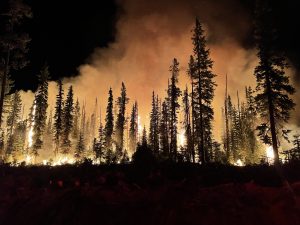 For example, Shell Canada is now promoting its efforts to ensure “the protection and restoration of natural ecosystems such as forests, grasslands and wetlands” as a central component to its greenhouse gas mitigation strategy.
For example, Shell Canada is now promoting its efforts to ensure “the protection and restoration of natural ecosystems such as forests, grasslands and wetlands” as a central component to its greenhouse gas mitigation strategy.
Of course, there is no mention of greenhouse gas emissions from the ever-increasing area burnt by Canadian wildfires. Nor does Shell mention the emissions being released as permafrost thaws and previously frozen organic matter begins to decompose.
The Darkwoods Forest Carbon project offers a glimpse into what is being considered by government and industry decision-makers as a means of offsetting emissions from the natural gas sector. The project aims to “offset” these emissions with carbon trading and forest conservation.
Such efforts will prove futile and, as we have shown, natural carbon sinks (like forests) do not stop warming and cannot be considered offsets.
Lesson for negotiators
As we move into the final week of COP29, one can only hope that international negotiators acknowledge the difference between natural and geological sinks of anthropogenic carbon.
Only the latter will lead to net-zero emissions and keep warming to below 3C above pre-industrial levels. Of course, the most efficient way to reduce emissions is to rapidly decarbonize global energy systems. Everything else only delays the inevitable.
Policy negotiations should be focused on eliminating emissions at source and developing approaches to directly extract and geologically store carbon dioxide already present in the atmosphere.
Sadly, given socioeconomic inertia, ongoing political inaction and geopolitical instability, as well as the slow rate at which energy systems are transforming to become emissions free, it is almost certain that 1.5C warming will be surpassed imminently with 2C following suit within the next two decades. The Paris Agreement is in trouble.
Surely we can do better.
To summarize
A rather direct summary translation of our recent paper can also be found in this satirical video. If you are offended by foul language, perhaps ski the video!
How can BC’s environmental organizations be more effective?
I’ve commented before that I’m thrilled with the outcome of the 2024 BC Provincial election that gave the BC NDP a razor thin majority. With 47 seats compared to 44 held by the BC Conservatives and two by the BC Greens, David Eby and the BC NDP have been sent a strong message. British Columbians have rejected ideological-driven activism, empty promises with destructive consequences, and out-of-touch hubris in favour of a more open, decentralized and inclusive approach to governance.
The BC Conservatives came within a hair of forming government and are now considered BC’s government in waiting. British Columbians were unsure what a BC Conservative government would look like and instead gave their numerous rookie MLAs valuable time to gain legislative experience while their nascent party infrastructure is strengthened and their policy platform more carefully constructed. And the electorate have rejected the far left ecosocialist agenda espoused by the now unelected BC Green leader in favour of a back to basics centrist approach.
But where does this leave BC’s environmental organizations? To be blunt, they’ve become largely inconsequential. The BC NDP don’t have to listen to them; the BC Greens will feel betrayed by them; the BC Conservatives feel like they are the enemy. That’s a recipe for irrelevancy, not influence. Please let me explain.
 Many within the environmental community campaigned against the Greens in 2017 out of fear of a BC Liberal majority. The tired “vote splitting” narrative was the central justification for not voting Green. Yet the BC Greens ended up holding the balance of power with 17% of the popular vote and 3 Green MLAs being elected. Our solutions-based message of viewing environmental challenges through the lens of the opportunity they present for innovation resonated with many centrist voters in rural and urban BC.
Many within the environmental community campaigned against the Greens in 2017 out of fear of a BC Liberal majority. The tired “vote splitting” narrative was the central justification for not voting Green. Yet the BC Greens ended up holding the balance of power with 17% of the popular vote and 3 Green MLAs being elected. Our solutions-based message of viewing environmental challenges through the lens of the opportunity they present for innovation resonated with many centrist voters in rural and urban BC.
Post 2017, many environmental organizations decided that the best strategy to advance their agenda would be to pressure the BC Greens in an attempt to influence the BC NDP indirectly. But their approach was ineffective as it was clear that many within the environmental community were perpetually stuck in combat mode. They didn’t seem to know how to:
- Offer pragmatic, constructive solutions;
- Recognize that perfection is the enemy of progress;
- Support decisions and decision makers once a decision has been made that they agree with;
- Work across partisan lines to build relationships and trust;
- Recognize that they are but one stakeholder in any policy discussion/deliberation and a diversity of voices must also be heard.
Organizing for Change, an umbrella organization, was particularly ineffective in this regard. I’ll never forget the day they sent a delegation to the legislature to lobby the BC Greens about minutia that I don’t recall. Yet just a week earlier — in their quest to do what the BC Liberals were unable to — the BC NDP introduced Bill 10, Income Tax Amendment Act 2019 embodying an intergenerational sellout to bring LNG to BC funded through a stunning package of corporate welfare. My two BC Green colleagues and I would have welcomed some external pressure from the environmental community on the BC NDP government. We spent hours speaking against the Act and proposed three amendments (Reasoned, Hoist and Send to Committee) designed to kill the bill. These were all defeated. Deafening silence was all that we heard from BC’s environment organizations.
| 2nd Reading & Reasoned Amendment (1:46:38) | Hoist Motion (43:12) | |
| Motion to Send to Committee (26:19) |
Even worse, the day that Organizing for Change were lobbying us was also the day that Bill 10 came up for debate at committee stage. Nobody in their delegation was even aware that this was happening as my BC Green colleagues and I voted against every section of the bill (including the title). And so, while the environmental activists were quietly watching from the public gallery, the BC NDP and BC Liberals were passing legislation that enabled the single biggest point source of greenhouse gas emissions in BC’s history.
But what saddened me the most that day was the fact that I knew full well that many BC NDP MLAs rose and supported this sellout as they were whipped into doing so. They voted against everything they apparently believed in. In fact, I sat in the legislature for 7 1/2 years and witnessed not a single instance when an NDP MLA voted against their party. This was not the case with the BC Liberals who had MLAs break ranks several times during my tenure in the legislature.
This is but one example that serves to illustrate why the BC environmental community has been wildly ineffective and has had very little impact in BC since 2017. The BC NDP don’t need to listen to them as they know that at the end of the day, the obviously partisan folk within this community will support them at the next election. As a result, the BC NDP can get away with patronizing and managing the environmental community. The BC Greens have likely learned their lesson that the pathway to success resides in a centrist, pragmatic approach to environmental policy. They cannot rely on the environmental community to support them (except in one or two ridings), and I suspect their leader is feeling particularly burned having watched the BC Green share of the popular vote cut by more than half (to 8%) from the 2017 high of 17%.
Meanwhile, the BC Conservatives will almost certainly ignore the BC environmental community. This is particularly ironic as the first seven letters of their party name are C-O-N-S-E-R-V. Yet it is perfectly understandable as the environmental community doesn’t appear to know how to be effective in their quest to advance environmental policy. Instead, it seems that they are stuck inside their own echo chamber calling people out without knowing how to call them in.
Some have criticized me for reaching out to John Rustad and the BC Conservatives during this past election. My response to them is to watch this video and compare it to what the BC Conservatives were saying just 6 months ago.
And the focus on food/water security & climate adaptation are not unrelated to John Rustad listening and modifying his earlier views based on the constructive dialogues we had. The environmental community in BC are ineffective as they too often demonize rather than attempt to build relationships and trust with decision makers. And I reiterate, the NDP don’t have to listen to them as they’ve shown their hand…they will support the NDP no matter what.
Had the BC Conservatives won a majority government, and they came very close to doing so, who would have been there to advise them on the challenges and opportunities associated with ongoing global warming. Many, if not most, of BC’s environmental organizations would have simply been shut out and ignored.
Consider this as wisdom from an elder in the climate community who has worked on the climate file since the late 1980s. Take it or leave it as you see fit. Many of today’s activists were not even born when I joined my climate science colleagues in raising public awareness of the challenges and opportunities associated with ongoing global warming. My concluding advice to those aspiring to facilitate environmental policy change in this province is to emphasize these points:
- Offer pragmatic, constructive solutions;
- Recognize that perfection is the enemy of progress;
- Support decisions and decision makers once a decision has been made that they agree with;
- Work across partisan lines to build relationships and trust;
- Recognize that you are but one stakeholder in any policy discussion/deliberation and a diversity of voices must also be heard.
You’ll be surprised at how much more effective you will be.



